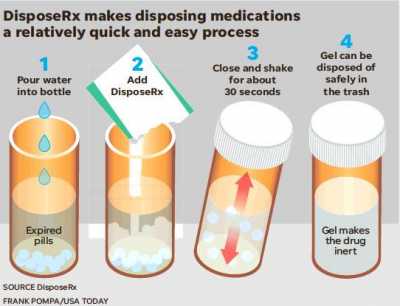MedicalResearch.com Interview with:
John Holaday, PhD
Chairman and CEO of DisposeRx
Dr. Holaday discusses the recentannouncement that Walgreen's has added DisposeRx to its safe medication drop off kiosks.
MedicalResearch.com: What is the background for this study? How big is the problem of unused risky medications leftover after the need or indication period has passed?
Response: Keeping leftover medications in the home significantly increases the risk of accidental poisonings as well as diversion, which can lead to addiction, overdoses and death. According to the Centers for Disease Control & Prevention (CDC), accidental medicine poisonings send nearly
60,000 children under 5 years old to emergency rooms annually. And, a study by the National Institute on Drug Abuse found that the first opioid used by 70% of individuals with heroin-use disorder was a prescription pain medication, often remaining in their medicine cabinet well after the pain subsided and then a remaining temptation for abuse.
This is a pervasive problem across the country. In an independent
survey DisposeRx sponsored, it was found that 4 out of 10 Americans are keeping leftover prescriptions—including opioids – in their medicine cabinets. Other results of the survey include: 62% of respondents who said they stored medications in case a condition returns; and 37% said they save prescription drugs in case a friend or family member needs them.

These consumers need to be educated about all the potential harm resulting from saving leftover medications. Leading pharmacy chains such as Walgreens are committed, as responsible corporate citizens, to making DisposeRx available upon request for their customers and to educate them about its use in getting rid of leftover drugs before they cause harm. Walgreens sees value in adding DisposeRx at-home solution to its comprehensive medication management and opioid stewardship programs as an additional method to reduce risks and exposure.
(more…)






























